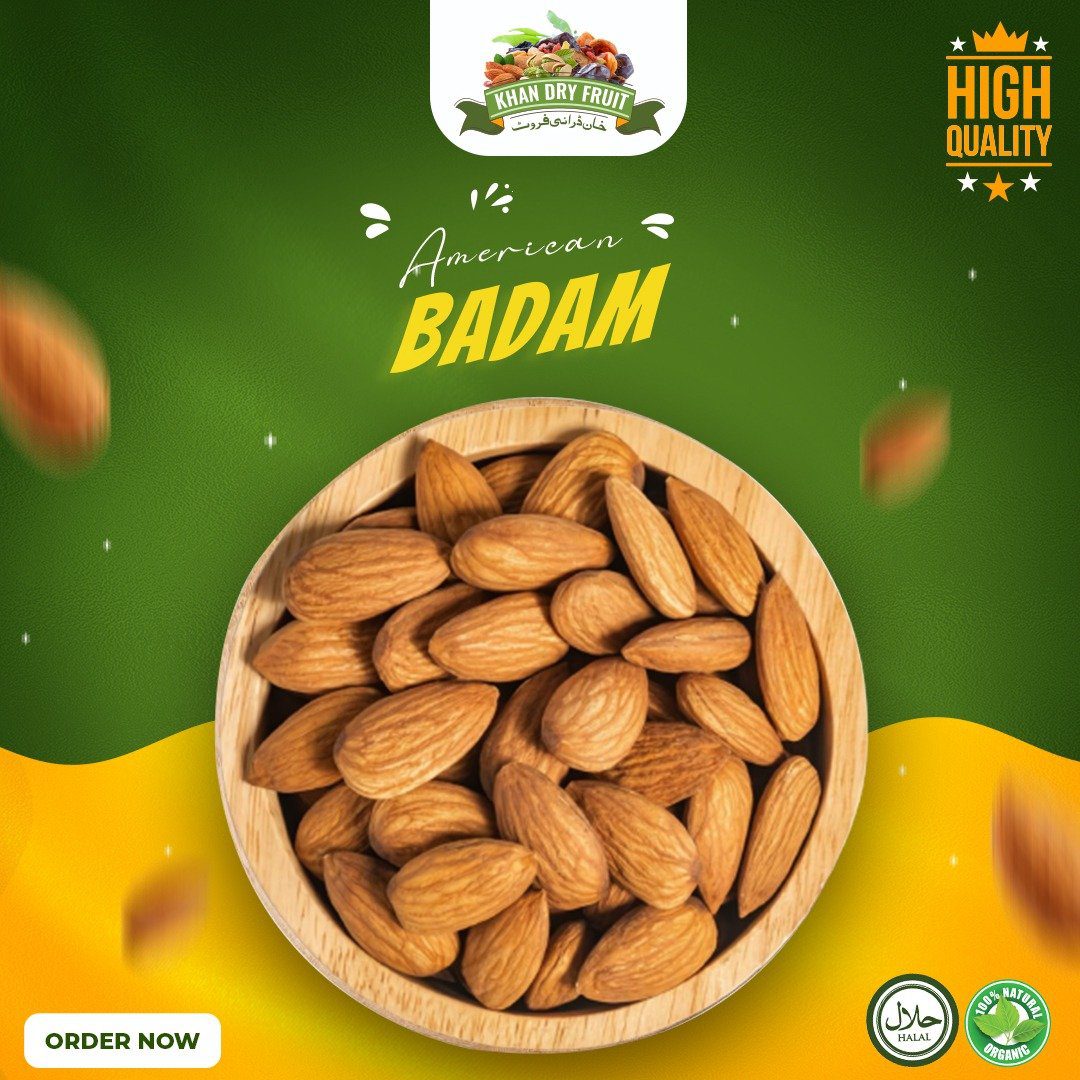Almond prices in Pakistan
Almonds hold a significant place in Pakistani culture, both as a traditional ingredient in dishes and as a popular snack. The pricing of almonds is a topic of interest due to its impact on consumer choices and market dynamics.
Factors Influencing Almond Prices
Demand and Supply Dynamics
The price of almonds in Pakistan is heavily influenced by supply-and-demand dynamics. During peak seasons, such as harvest times, prices may decrease due to higher supply. Conversely, off-season or low-production periods can lead to price spikes.
Seasonal Variations
Seasonal variations play a crucial role in almond pricing. Prices tend to fluctuate throughout the year, with seasonal factors affecting both supply and consumer demand.
Quality Grading
The quality of almonds, categorised by size, freshness, and origin, significantly impacts their pricing. Higher-quality almonds often command a premium in the market due to their superior taste and nutritional value.
Current Market Trends
Recent Price Fluctuations
In recent years, almond prices in Pakistan have shown fluctuations influenced by global market trends, weather conditions affecting harvests, and economic factors.
Impact of Global Market
The global almond market, particularly the prices of imported varieties from countries like the United States, also influences local prices in Pakistan. Changes in global supply or trade policies can have ripple effects on domestic prices.
Types of Almonds Available
Local Varieties
Locally grown almonds, produced in regions like Gilgit-Baltistan and Balochistan, cater to the domestic market. These almonds vary in size and quality based on regional climatic conditions and cultivation practices.
Imported Varieties
American almonds, known for their larger size and uniformity, are imported into Pakistan. These almonds often appeal to consumers seeking specific taste profiles and nutritional benefits.
Comparison of Local vs. Imported Almonds
Quality Considerations
Local almonds are appreciated for their freshness and traditional flavours, whereas imported almonds are preferred for their larger size and consistent quality standards.
Price Variations
American almonds are available at competitive prices ranging from 1,600 to 1,800 PKR per kilogrammeme, making them an attractive option for cost-conscious consumers compared to local varieties priced between 2,200 and 2,500 PKR per kilogrammeme.
Popular Markets for Almonds
Major Cities
Urban centres like Karachi, Lahore, and Islamabad host bustling markets where a variety of almonds are available. These markets cater to diverse consumer preferences and offer competitive pricing.
Online Platforms
The emergence of e-commerce has made buying almonds more convenient, with online platforms offering a wide range of choices and competitive deals. Consumers can compare prices and read reviews before making purchases.
Buying Almonds in Bulk
Wholesale Markets
For bulk buyers and retailers, wholesale markets in cities like Faisalabad and Peshawar provide opportunities to purchase almonds at discounted rates. Negotiating prices and ensuring quality are essential considerations.
Bulk Purchase Tips
Buyers should check for freshness, inquire about the almond’s origin and storage conditions, and ensure compliance with food safety standards when purchasing in bulk.
Consumer Preferences and Choices
Health Benefits Awareness
The growing awareness of almonds’ health benefits, including their role in heart health and weight management, has boosted consumer demand in Pakistan. Health-conscious consumers often prioritise quality and nutritional value when selecting almonds.
Taste Preferences
Taste preferences vary regionally in Pakistan, influencing almond consumption patterns. Some consumers prefer the distinct flavour of local almonds, while others opt for imported varieties for their size and texture.
Almonds in Pakistani Cuisine
Traditional Uses
Almonds are integral to Pakistani cuisine, appearing prominently in both sweet and savoury dishes. Traditional desserts like kheer and halwa often include almonds for flavour and garnish.
Modern Recipes
Innovative chefs and home cooks incorporate almonds into modern recipes, such as salads, smoothies, and almond-based sauces, highlighting their versatility in contemporary cooking.
Economic Impact of Almond Trade
Local Economy
Almond cultivation contributes to the livelihoods of farmers in regions like Gilgit-Baltistan, providing economic opportunities and supporting rural economies.
Trade Policies
Government policies and international trade agreements impact almond prices and availability in Pakistan, shaping market dynamics and import-export trends.
Future Outlook for Almond Prices
Projected Trends
Experts anticipate continued fluctuation in almond prices based on global market conditions, climate factors affecting harvests, and evolving consumer preferences.
Factors to Watch
Monitoring global supply trends, weather patterns, and consumer behaviour will be critical for stakeholders in predicting future price movements and market dynamics.
Tips for Consumers
Smart Shopping Strategies
Compare prices across different markets and online platforms to find the best deals on almonds. Consider seasonal variations and bulk purchase options for cost savings.
Quality Checks
Inspect almonds for freshness, look for intact shells, and ensure they are free from mould or discoloration. Buying from reputable suppliers enhances quality assurance.
Conclusion
The price of almonds in Pakistan reflects a dynamic interplay of local production, international trade, consumer preferences, and economic factors. Whether choosing local or imported varieties, consumers can enjoy almonds’ nutritional benefits and culinary versatility. By staying informed about market trends and making informed purchasing decisions, consumers can navigate the diverse almond market in Pakistan effectively.
Almonds
Almonds
Almonds
Almonds
Almonds
Almonds
Almonds
Almonds

















